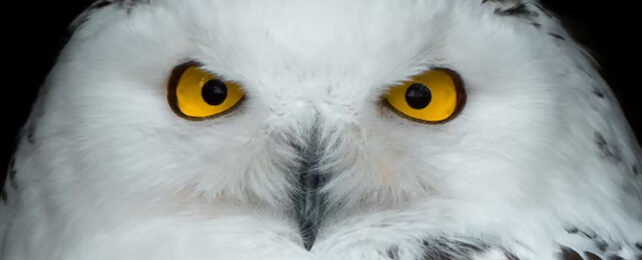Consuming over a third of Earth's vertebrates, the most voracious predator our planet has ever known has a staggering ecological impact.
New research finds this animal's consumption creates a footprint 1,300 times larger than anything else we have records for. Yet only about half of what is being taken is for food.
That predator is, of course, us. Surprisingly, we don't even fit into the classification of an apex predator. A massive chunk of our exploitation is driven by our mere whims.
"Cultural phenomenon drives the over-exploitation of a wild species," explains Dalhousie University marine ecologist Boris Worm.
Worm stumbled across a stark example of this in Indonesia, where demand for wild owls soared after the magnificent winged predators featured prominently in the Harry Potter franchise.
"It drove a wave of exploitation of wild owls to service that spike in demand," says Worm, noting the same thing happened with reef fish after Finding Nemo.
"Through our fascination with these species, we sometimes love them to death."

As well as feeding the pet industry, use of animals in medicines and other products are now so common they're key threats to endangered species in many areas around the world. Regardless of the intended purposes, removing these animals from the wild has the exact same impact as predation in an ecosystem.
Not only does it have a direct effect by removing individuals but it causes behavioral changes in those that remain too – the ecology of fear. Avoiding predation causes behavioral, physiological, and cognitive stresses that can impact an animal's survival and breeding success. So increased predation causes these stressors to increase as well.
What's more, removing individuals is a process of 'harvest' selection, which not unlike natural selection changes species traits over time. Previous research shows human hunted species demonstrate some of the most abrupt trait changes ever observed in wild populations.
This can potentially change key traits that provide important functions that underpin entire ecosystems.
"The unnatural selection of animals by human predators could lead to a range of repercussions across ecosystems," explains ecologist Rob Cooke of the UK Centre of Ecology and Hydrology. "From the potential loss of large seed-dispersers, such as the Helmeted Hornbill to megaherbivores such as the Black Rhino, to migratory predators such as large sharks."
This all contributes to the fact that we humans are now the dominant driving force of evolution on Earth.
"We're an extraordinary predator in that our prey spectrum – the total number of species that we're after – is in the order of 15,000 just for the vertebrates and we're using many of those in an unsustainable way so much so that it threatens their survival," says Worm.
"A niche is a species' ecological operating space – where it lives, what it feeds on, essentially the conditions it needs to survive. The point here is that humans use many, many more species than any other vertebrate – we have a super-sized niche and are the most influential predator in many ecosystems."
And this stark assessment doesn't even factor in our historic exploitation of species, or incidental loss through habitat destruction, invasive species and climate change.
While the new paper focuses on vertebrates, our exploitation extends across most of life's domains, including spiders, plants and fungi, aided by the dark web. All of these unregulated movements of animals also risk human exposure to new potential diseases.
But there are ways to change this. The researchers point to examples of place-based management systems that indigenous peoples have used to create sustainable harvests for millennia.
"The good news is that humanity now recognizes our destructive tendencies and there is a real attempt to use the best available science to get things right," says Worm.
Our desire to admire and cherish Earth's curious, strange, and beautiful life should not threaten its right to exist.
This research was published in Communications Biology.
